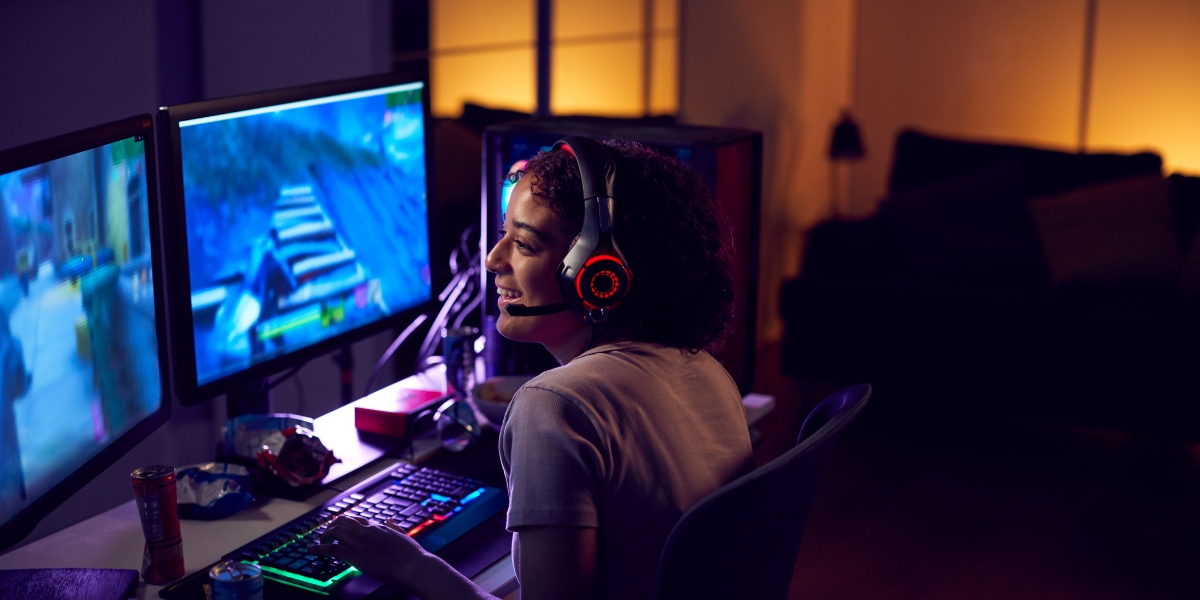Talking to your child about online gaming safety
Online gaming has become one of the most common ways children connect with friends. But they are not just playing with classmates anymore. They are playing with strangers too. Some are children. Some are not. And not everyone has good intentions.
In-game chat features and private messaging make it easy for offenders to target children. They can pretend to be someone else. They can offer gifts, ask personal questions, or move conversations to more private apps. That is how grooming begins.
You do not have to be a tech expert to help protect the children in your life. But you do need to talk with them about safety, ask questions, and stay involved in what they are doing online.
Six ways to keep online gaming safer
Here are some steps you can take today. They come from our free resource, Online Gaming: Tips for Protecting Children, and are designed to give parents and caregivers more confidence when it comes to digital safety.
- Talk about online identity
Remind children that people online can lie about who they are. A username or profile photo does not prove anything. Just because someone sounds friendly does not mean they are safe. - Practice red-flag scenarios
What would your child do if someone asked them to share a photo, accept a gift, or keep a secret? Talk through those situations together. Help them know when and how to say no. - Teach how to block and report
Show your child how to block players and report inappropriate behavior. If they are too young to do this alone, make sure they know to come to you. - Check privacy settings
Explore parental controls together. Many games allow you to turn off voice chat, block explicit language, or limit communication to approved contacts. - Know what they are playing
Every game has a rating for a reason. Some also offer kid-specific servers or safety settings. Take a few minutes to review these before your child plays. - Keep the conversation going
Gaming can be fun, creative, and social. The goal is not to remove gaming, but to guide children toward safe, healthy play. The goal is to help children stay alert and aware. Check in often, ask what they are playing, and keep the door open for conversation.
Setting healthy screen time limits
In addition to gaming safety, families should also consider healthy screen time habits. The American Academy of Pediatrics (AAP) recommends:
Infants & Toddlers (0–2 years):
- No screen time under 18 months
- Up to 1 hour/day for ages 18–24 months
Preschoolers (3–5 years):
- Limit to 1 hour/day
- Avoid screen time under age 3
School-Age Children (6–12 years):
- Limit to 2 hours/day
- Balance screens with other activities
Teens (13–18 years):
- Consistent limits based on needs and family values
- Monitor for age-appropriate content
- Encourage balance with exercise, sleep, and social time
Additional tips:
- Avoid screens before bed
- Limit screen use during meals
- Create screen-free zones (bedrooms, dining tables)
- Watch for signs of excessive use, such as sleep problems, eye strain, or isolation
These guidelines are general. Families may need to adjust them based on individual needs, and it’s always wise to consult with a pediatrician.
Download the full guide
These tips are just a starting point. Our full guide offers more tools, examples, and support for parents and caregivers.
Download your free copy of Online Gaming: Tips for Protecting Children.
You do not have to know every game or platform. You just need to show up, ask questions, and be ready to listen. That is what protection looks like. When parents, caregivers, educators, and technology companies work together, children are safer both online and off.


